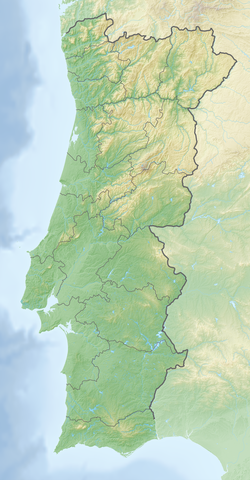
Back فارو Arabic Faro, Portugal BAN Фару Byelorussian Фару Bulgarian ফারু Bengali/Bangla Faro Breton Faro Catalan Фару CE Faro (kapital sa distrito) CEB Faro Czech
Faro | |
|---|---|
municipality | |
|
Clockwise from top: aerial view of Faro; Faro Cathedral; city gates; Castelo de Faro; historic center; and Estói Palace | |
| Coordinates: 37°00′58″N 07°56′06″W / 37.01611°N 7.93500°W | |
| Country | |
| CIM | Faro-Loulé-Olhão |
| District | Faro |
| Region | Algarve |
| Settlement | c. 400 BCE |
| Roman Ossonoba | c. 206 a.C |
| Administrative Capital of Algarve | 1756 |
| Civil parishes | 4 |
| Government | |
| • Type | Local administrative unit |
| • Body | Concelho/Câmara Municipal |
| • Mayor | Rogério Bacalhau (PSD) |
| Area | |
• municipality | 202.57 km2 (78.21 sq mi) |
| Population (2021) | |
• municipality | |
| • Metro (Total CIM) | |
| Municipal holiday | 7 September |
| Website | Official website |
Faro (/ˈfɑːroʊ/ FAR-oh, Portuguese: [ˈfaɾu] ) is a municipality, the southernmost city and capital of the district of the same name, in the Algarve region of southern Portugal.[2] With an estimated population of 67,566 inhabitants in 2021[1] (with 39,733 inhabitants in the city proper,[3] making it the biggest city and second most populous municipality in the Algarve (after Loulé) and one of the biggest in Southern Portugal), the municipality covers an area of about 202.57 km2 (78.21 sq mi).[4]
The municipalities of Faro-Olhão-Loulé due to its adjacency, sharing of infrastructures and regular commute can be considered an intermunicipal community with a population of 184,578 inhabitants (2021). A Metro connecting this community is planned to be finished by 2029.[5]
- ^ a b c "População residente: total e por grandes grupos etários". Pordata. Retrieved 4 May 2021.
- ^ Algarve/Southern Portugal (GeoCenter Detail Map). GeoCenter International Ltd. 2003. ISBN 3-8297-6235-6.
- ^ "União de Freguesias de Faro". cm-faro.pt (in European Portuguese). Retrieved 4 May 2021.
- ^ "Statistics Portugal". Ine.pt. Retrieved 10 July 2015.
- ^ "CCDR Algarve Metrobus". ccdr-alg.pt. Retrieved 12 February 2024.









